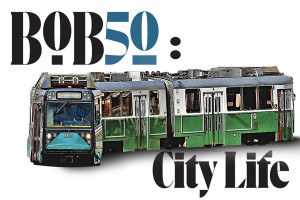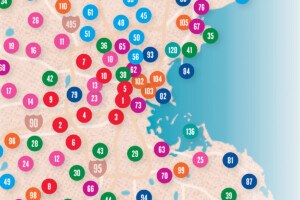MassDOT's Red/Blue Connector? Gone.
Last week, MassDOT did the right thing: effectively ending the Red/Blue Connector project.
The project had some logic to it — the Blue Line ends abruptly at the Bowdoin Street station right near City Hall Plaza, and the connector would have extended it to the Charles/MGH Red Line station, connecting the two lines directly while giving Blue Line riders access to MGH and Red Line riders a single-transfer trip to the airport.
The state committed to the project in a different time and place. The Big Dig was only supposed to cost a few billion dollars, most of that federal money, so committing ourselves to some big transit projects must have seemed logical.
The current reality is much different. The Big Dig cost slightly more than we thought, and the Feds cut off the money spigot halfway through. We don’t have enough money to maintain our current system, nevermind large expansion projects.
And the Red/Blue Connector was growing in cost. Although seemingly modest in scope — building a few hundred yards of subway, the planning and design costs for the project had escalated from $29 million to $52 million. Construction costs went from $290 million to $748 million.
There’s been a troubling practice of keeping unfeasible projects in the ‘design’ phase indefinitely as a means of appeasing advocates, wasting dollars on fantasies at the expense of real projects. MassDOT deserves credit for acknowledging this reality and stopping the Red/Blue Connector altogether.
Despite the logic of connecting the two lines, I’ve never really grasped the urgency and prioritization of the project. With the Silver Line, Red Line riders now have a better single transfer option to the airport.
As for demand, if there were droves of underserved people needing to reach MGH or related firms, I’d expect that Bowdoin Station would be a high-traffic station (with workers walking the several hundred yards down the hill to MGH). In fact, Bowdoin is pretty lonely place, actually closing on weekends and after 6:30 pm on weeknights. See here and here to for how quiet it gets. In terms of traffic, it ranks 59th of out 63 subway stations, with just 1,454 entries per day.
Lastly, for residents, commuters, and abutters who lived through the epic 10-year reconstruction of Cambridge Street, the prospect of punching multiple excavation holes into that street would not have been welcome.
If the state wants to make the case that we need new revenues for transportation, one of the first steps is to spend its existing resources effectively. By ending the Red/Blue Connector, a costly project with doubtful benefits, MassDOT made a wise decision.
Crossposted on Pioneer Institute’s blog.


